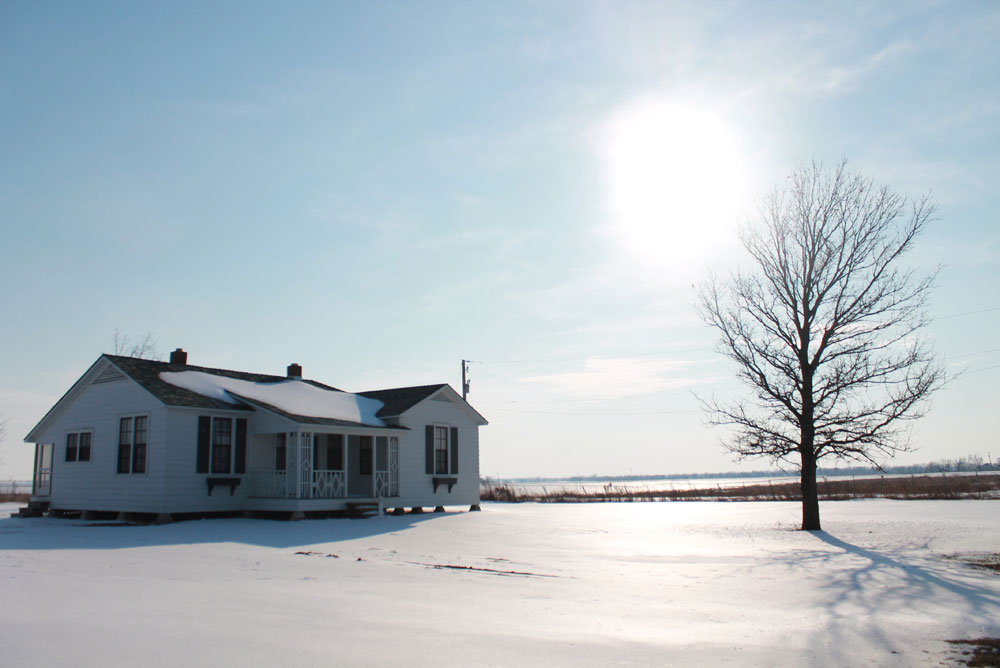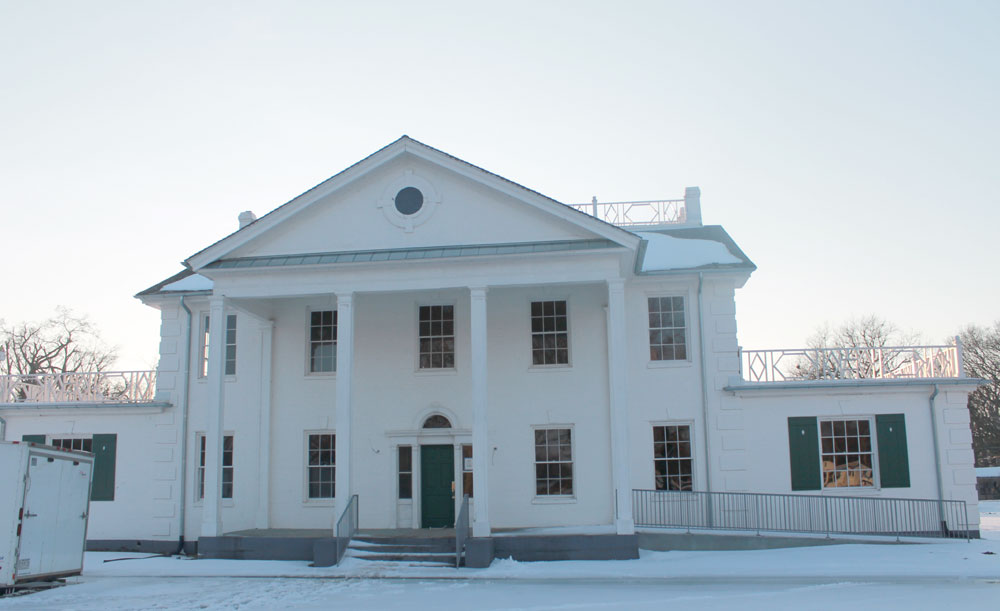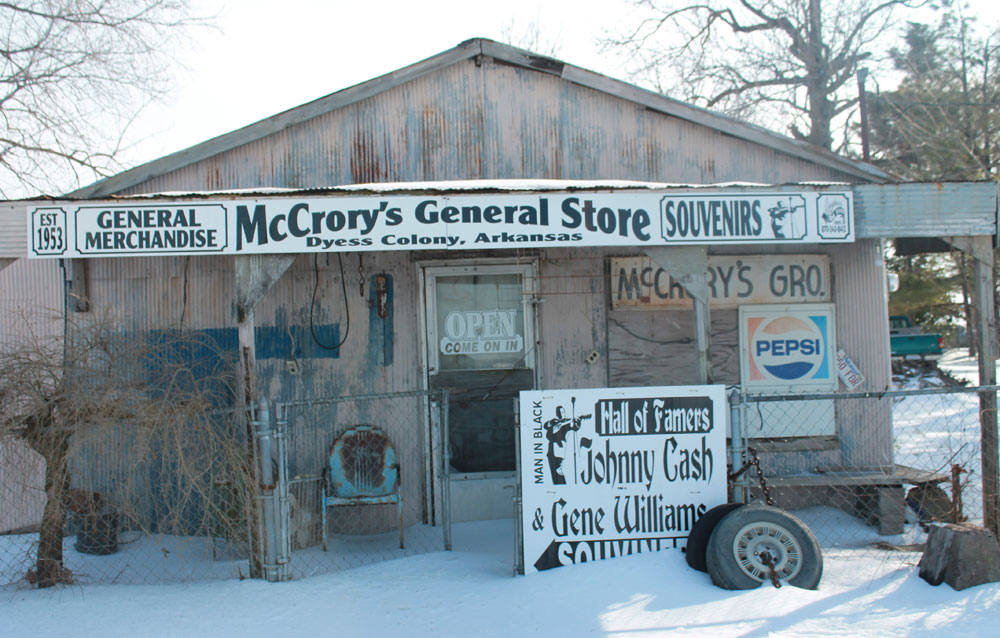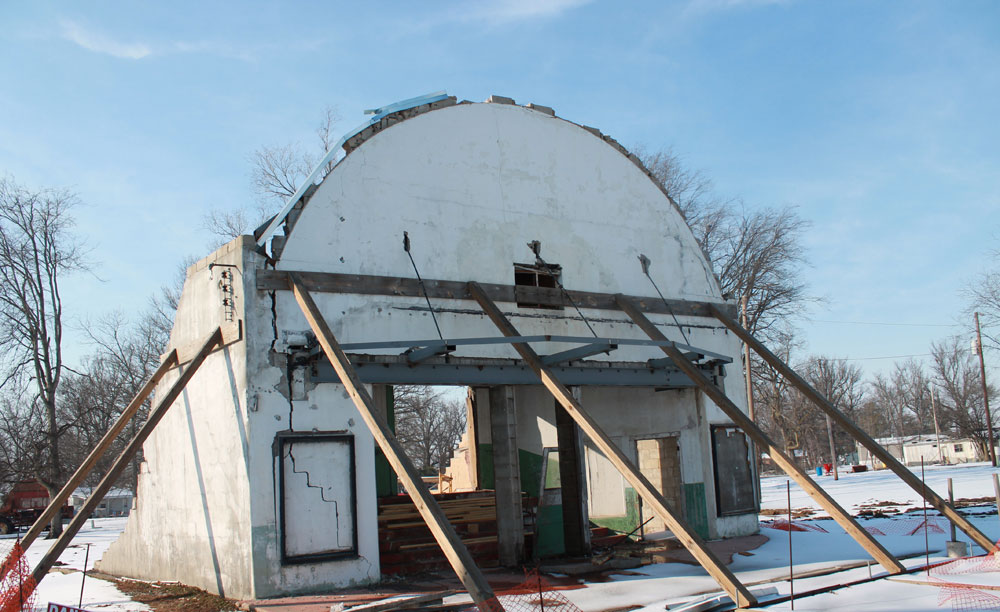A trip to Cash’s hometown
UALR archivist Colin Woodward visited Dyess in early March. The conditions were much like those the Cash family endured in the 1930s — cold, with bad roads. Some of the streets in Dyess had turned into a soup of slush, mud, and snow. The road that passes by the Cash house is gravel, which makes it treacherous for anyone driving past in bad weather. Dr. Woodward was able to see the house up close. He also talked to some of the welcoming members of the community in this unique place.

Johnny Cash was born in Kingsland in Cleveland County in 1932, but when he was 3 years old, his family moved to Dyess in Mississippi County in the northeastern part of the state. Cash’s father, Ray, took advantage of a new federal program that was setting up a farming community in Dyess. The place was named after William R. Dyess, a plantation owner from Mississippi County and the first head of the Works Progress Administration in Arkansas. The Dyess colony was an experiment, part of the New Deal programs that President Franklin D. Roosevelt hoped would alleviate hard times during the Depression.
Dyess was not open to everyone. Ray Cash, who had jumped the rails looking for work while the family was still living in Cleveland County, had to apply and undergo a screening process that made sure he was a hard worker and upstanding person. Many families were turned away. And it being the Jim Crow South, Dyess was segregated. Black families looking to settle in Dyess were turned away. Eventually, Dyess housed about 500 families and 2,500 people total. Dyess center had a cooperative store as well as a movie theatre.
Johnny Cash later said that he grew up “under socialism.” But Dyess was no welfare community. The government furnished Dyess farmers with a new house, 40 acres of land, and a mule. But farmers would have to pay the government if they wanted to one day own the property.
It took the Cash family an entire day to make the journey from Kingsland to Dyess in a slow-moving truck along muddy roads. The family had a new house and land, but much work needed to be done before the farm could prosper. Ray and his family soon set to work clearing brush, plowing fields, and doing all the other things required on farms.

In January 1937, the Mississippi River flooded in one of the worst natural disasters in Arkansas’s history. For Arkansas, the 1937 flood was worse than the more famous flood of 1927. As the waters rose in Dyess, Ray Cash sent the family south to Kingsland to stay with family until the flood receded. Ray remained in Dyess to watch over his property until he, too, had to leave. Johnny Cash would write a song in the 1950s about the flood, “Five Feet High and Rising.”
The Cash house survived the flood with minimal damage. And while frightening, the flood replenished the soil. That fall, the Cash family would produce a bumper cotton crop.
Johnny Cash would leave Dyess in 1950 for the Air Force. But he returned to his hometown in the late 1960s. In 1968, he performed two shows at his high school. And in 1969, a documentary film was released nationwide that showed Cash visiting his old house, which was then abandoned.

Arkansas State University now owns the Cash home in Dyess, which the university has painstakingly restored since purchasing it in 2011. Visitors will be able to tour the house later this year. Downtown Dyess will also feature a museum dedicated to the community’s history.
Dyess is much smaller today than it was in the 1930s, as it numbers only about 500 people (roughly the same size as Kingsland). But for Johnny Cash fans, it is a must-see destination.

The Center for Arkansas History and Culture is opening an exhibit on Johnny Cash in October. It will feature rare and unseen images of Cash and will tell the story of the singer’s days in Arkansas.